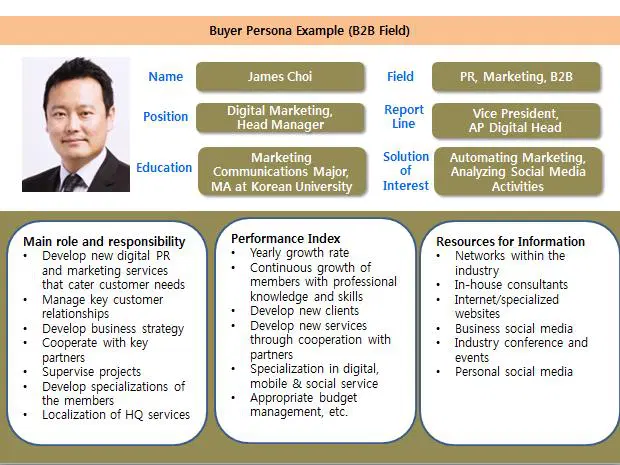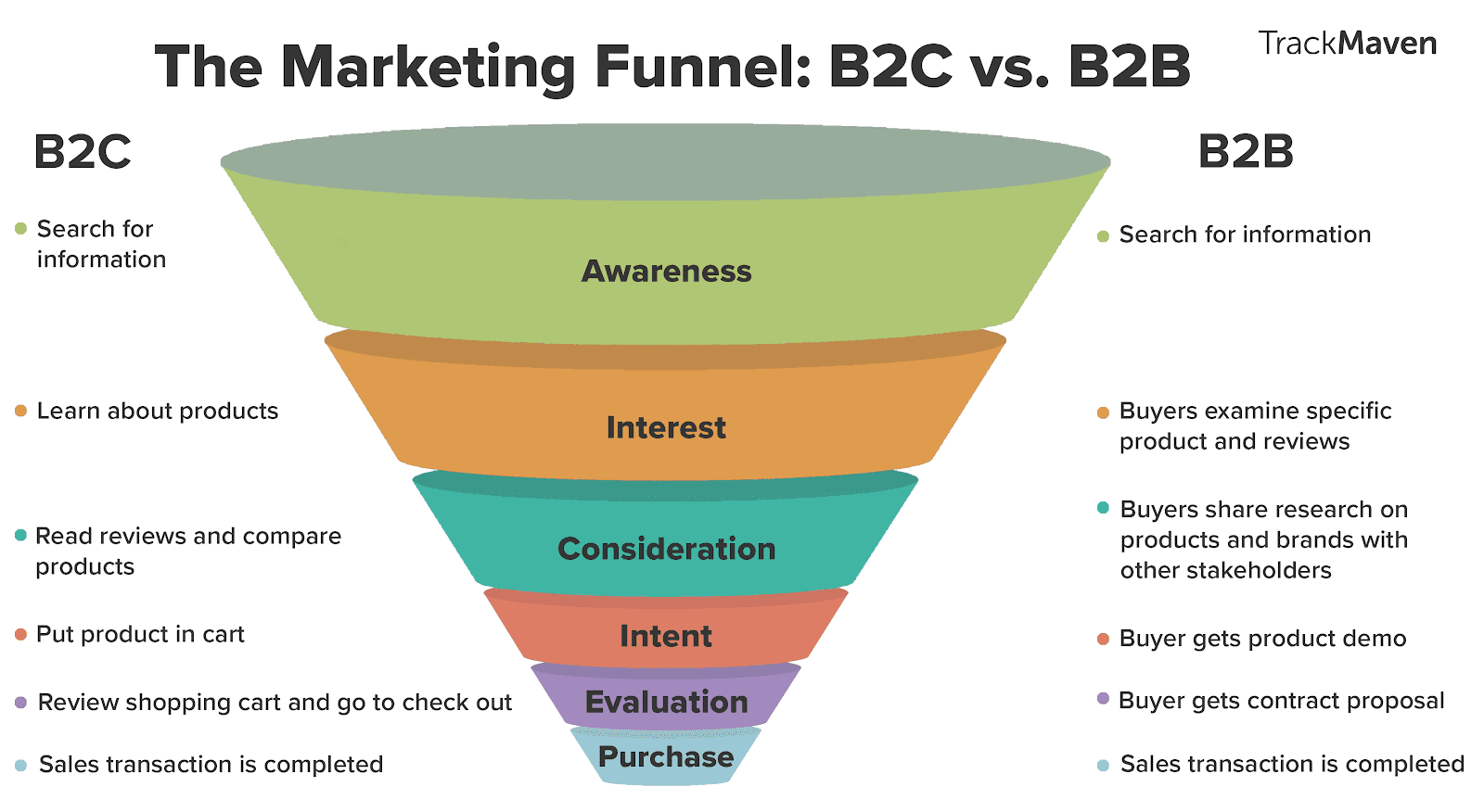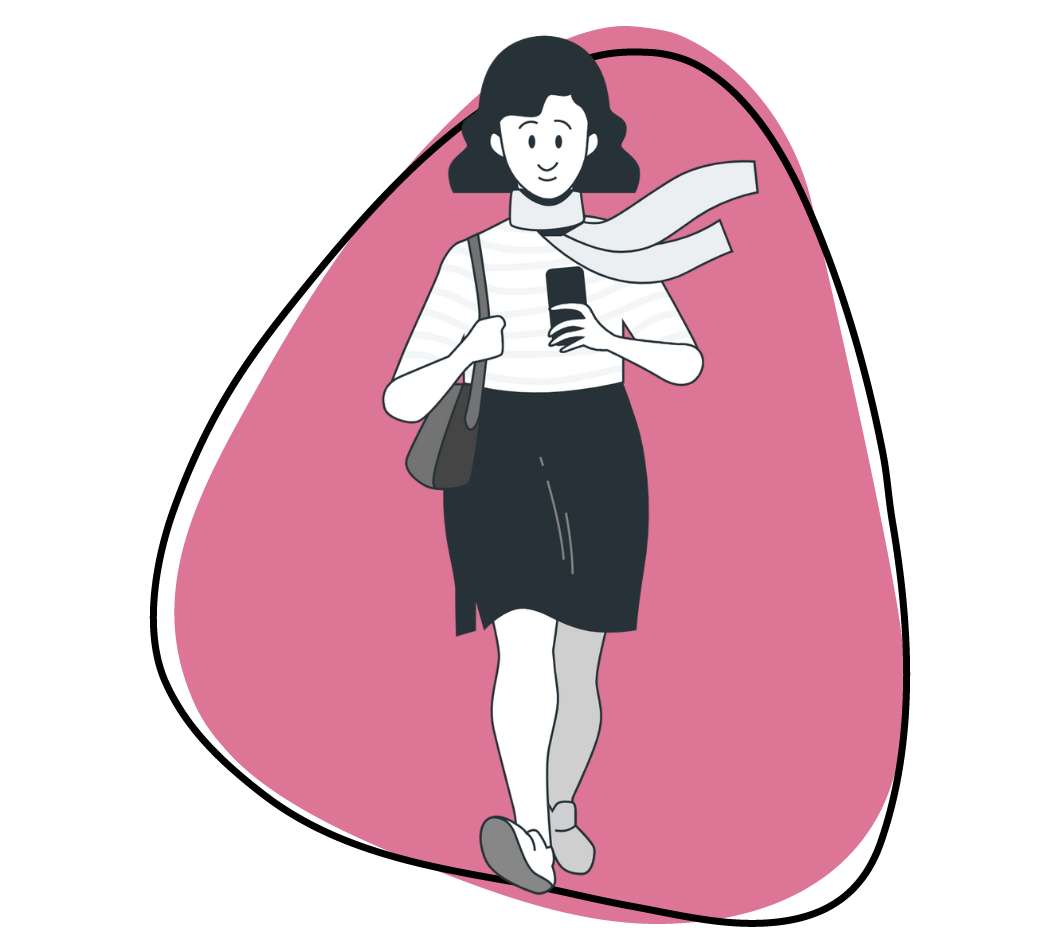To maximize your marketing campaign reach and get your content seen by the right audience, it’s important to get to know your customers beyond demographics.
Where do they go for trusted sources of information? What goes into their buying decisions? Knowing these answers can help you plan whole campaigns that target your ideal customers and get the word out where those customers will see it. The way to do this is to build buyer personas.
Buyer persona, also known as customer persona, is a semi-fictional customer description based on your actual customers’ demographics, behavior, lifestyle, motivations, and challenges. In a B2B context, buyer personas are represent the buyers who make purchasing decisions for companies.
Creating a Buyer Persona in B2B
The basic steps to building a B2B buyer persona is similar to B2C customer personas, with a few important distinctions. Let’s review the steps to building buyer personas that will help you plan your marketing campaigns.
Step 1: Picking Buyer Attributes
There are some important attributes to include in your buyer personas. Because you need to go deeper into your understanding of customers, you will think about their lifestyle, motivations, challenges, and goals. Here are some categories that most marketers include:
- Demographics: What is their age, location, and company/industry?
- Career: How long have they been working in the industry, what is their buying power, and what needs to happen in order to make buying decisions?
- Lifestyle: What are their major work responsibilities and activities?
- Media: Where do they go for trusted sources of information and networking: conferences, forums, and/or business social media?
- Motivations/Objectives/Goals: What drives their buying decisions, and what business goals do they have?
- Brands: What brands or products do they use already at their company? What do they like/dislike about those products?
- Pain Points/Frustrations/Challenges: What problems do they have that they need help solving? What challenges do they have trying to meet their business goals/objectives?
- Objections: What are frustrations they’ve had with related products or services (or with yours)?
Keep the categories above in mind as you move on to the next step, which is to research your existing buyers and companies.
Step 2: Research Buyers
When researching your ideal buyer, the first step is to brainstorm which industries and companies your product or service would be a great fit for. If you are unsure where to start, your company’s customer-facing teams, sales and customer service, have a lot of insights into your product or service’s potential customers. They can tell you a lot about your targeted industries, companies, and current buyers.
Once you have a better idea who your buyers are, you can start researching online. To research B2B buyer personas, visit LinkedIn, which provides an in-depth look at various companies and industries. By looking at employee profiles, you can glean information about how long they’ve been in the industry or in the specific company, what their education background is, and a lot more.
LinkedIn also has many opportunities for sharing articles, communicating with other professionals in forums, and connecting with others. Listen to what people are saying there, as it can point you in directions about potential motivations, challenges, and problems people in different industries face day-to-day.
Because personas are based on actual customers, you need to interview people one-on-one, in small focus groups, or detailed surveys. Use the attributes you want to include on your personas to help you plan your interview questions. Because you are interviewing business buyers, remember to be professional and mindful of their time.
In addition to interviews, you can use a variety of tools to mine for data like ZoomInfo or a ZoomInfo alternative, such as Lead411, which – with features like regular verified data, advanced filters, and unlimited data subscriptions – is one of the top data providers for B2B on the market.
Also, use Google Analytics to look at keywords, so you can learn what buyers are searching for when they find your website. In addition to business social media, you can also take a look at Facebook or Twitter Analytics to see what topics buyers are sharing and commenting on. You can also look at what brands they are following, and add it to your persona.
Once you have completed the research stage, it’s time to move on to building your buyer personas.
Step 3. Creating the Buyer Personas
 Buyer personas for B2B should focus on business motivations, challenges, and objectives.
Buyer personas for B2B should focus on business motivations, challenges, and objectives.
After spending so much time gathering data, you should start to see patterns emerge of different buyer personalities. You need to segment these buyers by industry and job positions, and then put the information together to create 2-6 buyer personas for your marketing team.
Each buyer should have a name and a face to bring your persona to life. For B2B, you can always separate personas by job titles, like Freddie Finance Manager or Imogene IT Manager. By using different job titles, it may help your team pictures each buyer when it’s time to do the marketing.
You can get creative in how you present your buyer personas. Zight (formerly CloudApp)’s easy to use visual tools will help you:
- Design visually-appealing, stand-out personas
- Securely save your persona to the cloud so they are accessible to your team
- Share your personas by embedding or linking content through Slack channels or emails
- Annotate images to highlight important attributes of each persona when building your marketing campaigns
Your final deliverable should be visually appealing, share-able with any audience, and in an easy-to-digest format.
Adapt Your Marketing Strategies for Your Buyer Personas

The marketing funnel varies slightly for B2B and B2C, much like your personas. Source TrackMaven
The whole point of creating buyer personas is that it allows you to target your marketing strategies to segmented audiences. One common use of this is in content marketing. It is easy to create content based on each persona, tailored to where that persona is on the buying funnel.
If you are working on content to educate potential buyers in the awareness stage, you can start with your buyer persona and use that to sketch out your content ideas. Let’s look at an example using James Choi’s persona above. Let’s say an SaaS company providing marketing productivity software believes that James Choi is a potential buyer.
Looking at the persona, James gets trusted information from business social media. Let’s say that means LinkedIn. You know your software provides solutions to problems listed on the persona, so you create videos or infographics related to those solutions. This content should then be promoted on LinkedIn, where it is most likely to be seen by the buyers most like James. This method generates leads and captures your intended audience’s attention.
When you are choosing the media for your potential buyers, keep in mind that that 65% of all people are visual learners, and people will spend 10% more time looking at visuals on a page than text. Visual content marketing is a great strategy for all customers, whether B2B or B2C.
Zight (formerly CloudApp)’s free screen recorder brings screen capture for Mac and PC, annotated screenshots, and GIF creation to the cloud in an easy-to-use app so you can quickly create visual content.
In addition to providing tools to create customer personas, we help marketing teams:
- Create eye-catching visual content to capture your audience’s attention
- Optimize campaign workflows by using screenshots, GIFs, and videos to deliver feedback, as well as share campaign performance and lead generations
- Find your content quickly with the Visual Search feature
As your potential customers get further down the buying funnel, you can continue to use personas to plan content that will target them, from white papers and webinars to promoting demos and gated content. Personas allow you to use your deep knowledge of buyers to focus your content on sharing how your product or service adds value to their specific business objectives.
For many businesses, the end of the buying funnel isn’t the end of the buyer’s journey. Since SaaS models depend on reducing customer churn by holding on to existing customers, buyer personas will matter even more as businesses reach out to further develop and continue their relationship with buyers. This way, they hold on to current subscribers, even as they nurture and grow new leads.
In this digital age where customers, whether in B2C or B2B, are constantly bombarded with content and advertisements, businesses need to find a way to stand out from the crowd. By using buyer personas, your marketing team can craft messages and content that will capture your audience’s attention and convert them into buyers.
For more about how Zight (formerly CloudApp) can help your marketing team, go here.


